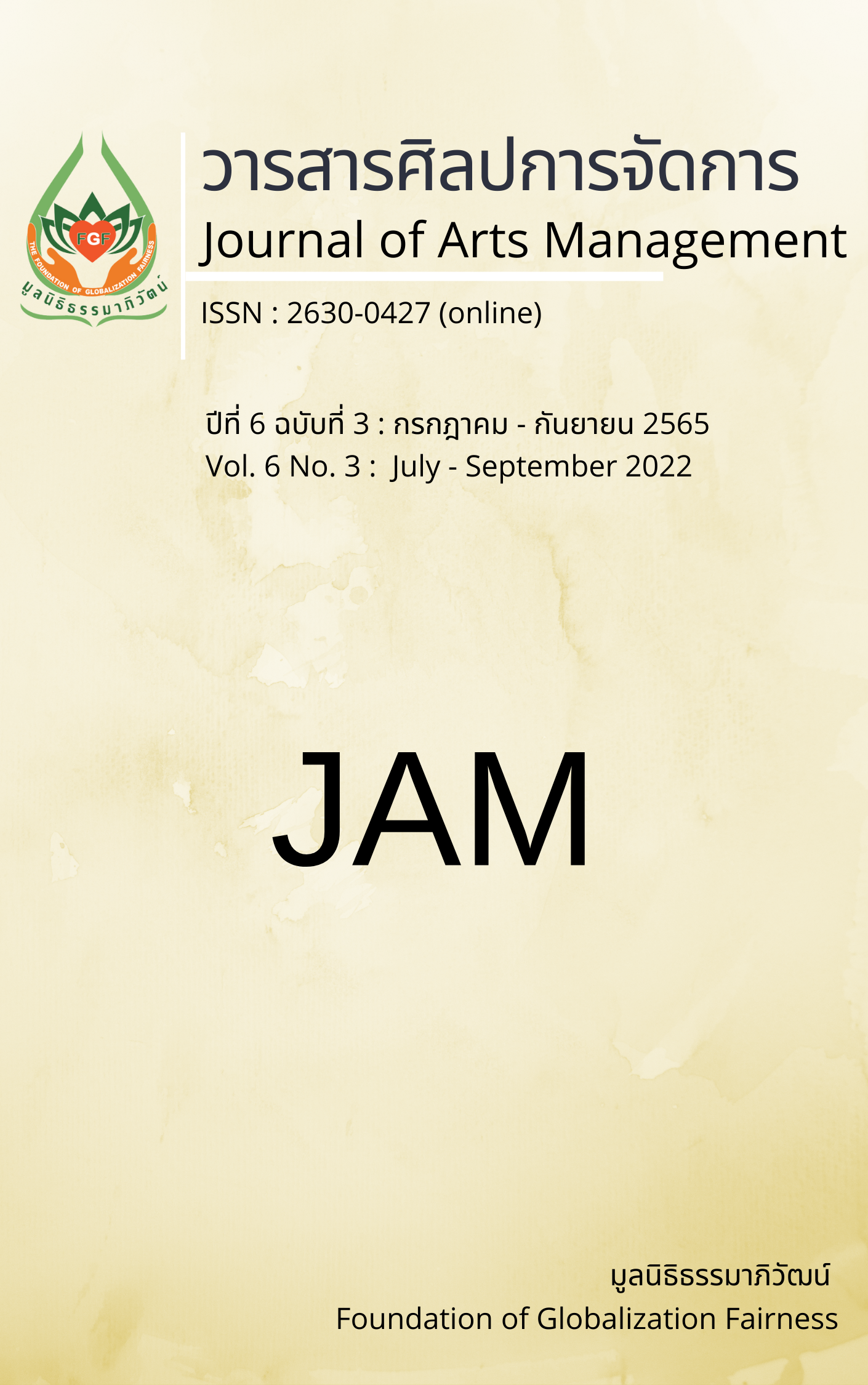Causal Factors Affecting Loyalty in Purchasing Products Through The Makro Application in Bangkok and Its Vicinity
Main Article Content
Abstract
The objectives of this research article were: 1) to validate the consistency of the causal factors affecting loyalty in purchasing products through the Makro application in Bangkok and its vicinity of consumers in Bangkok and its vicinity; and 2) to search for the causal factors affecting loyalty in purchasing products through the Makro application in Bangkok and its vicinity. The tools used in the research were online questionnaires. The sample group consisted of 390 people who had used to buy for the product on the Makro application in Bangkok and its vicinity. The statistics used in data analysis were the frequency, percentage, and structural equation model.
The results of the research showed that the causal relationship model of variables consisting of 4 components consisted of 1) service quality, 2) perceived value, 3) satisfaction, 4) loyalty and a model developed in accordance with empirical data. The statistics showed the Chi-square statistics goodness fit test (χ2) = 239.65, degrees of freedom (df) = 131, CMIN/df = 1.83, GFI = 0.94, AGFI = 0.90, SRMR = 0.03, RMSEA = 0.05. The final result was a predictive coefficient of 0.99, indicating that the variables in the model can explain loyalty in purchasing products through the Makro application by 99 percent, and service quality, perceived value, and satisfaction have a direct influence on customer loyalty, respectively.
Article Details

This work is licensed under a Creative Commons Attribution-NonCommercial-NoDerivatives 4.0 International License.
Views and opinions appearing in articles in the Journal of Arts of Management It is the responsibility of the author of the article. and does not constitute the view and responsibility of the editorial team I agree that the article is copyright of the Arts and Management Journal.
References
Aaker, J. (1991). The negative attraction effect? a study of the attraction effect under judgment and choice. Advances in Consumer Research, 18(199), 462-469.
Burton, G., & Thakur, M. (1995). Management today: Principles and practice. McGraw-Hill.
Carlson, J., O’Cass, A., & Ahrholdt, D. (2015). Assessing customers’ perceived value of the online channel of multichannel retailers: A two country examination. Journal of Retailing and Consumer Services, 27, 90-102. https://doi.org/10.1016/j.jretconser.2015.07.008
Chamsuk, W., Kamphaengphet, M., Poopuak, A., Siwawej, P., Phengchan, P., & Hart-rawung, C. (2019). A causal factors model influencing consumer loyalty toward AliExpress application of China in Thailand. Business Review, 11(1), 111-126.
Electronic Transactions Development Agency. (2022, June 1). Thailand internet user behavior. https://www.etda.or.th/th/Useful-Resource/publications/Thailand-Internet-User-Behavior-2021_Slides.aspx
Etzel, M. J. (2014). Marketing (12th ed). McGraw-Hill.
Gronroos, C. (1990) Service Management and Marketing: Managing the Moments of Truth in Service Competition. Lexington Books.
Hair, J.F., Black, W.C., Black, B., Babin, B.J., & Anderson, R.E. (2010). Multivariate data analysis (7th ed.). Pearson.
Hien, B. T., Hien, B. T., Tram, N. T. N., Tram, N. T. N., Minh, Ai, T. N., & Minh, Ai, T. N. (2021). Customer loyalty to modern retail channel a study in the context of covid-19 pandemic in Vietnam. Quality - Access to Success, 22(184), 122-130.
Indrasari, A., Nadjmie, N., & Endri, E. (2022). Determinants of satisfaction and loyalty of e-banking users during the COVID-19 pandemic. International Journal of Data and Network Science, 6(2), 497-508.
Kline, R.B. (2011). Principles and practice of structural equation modeling (3rd ed.). Guilford.
Kotler, P. (2003). Marketing Panagement (11th ed.). Prentice–Hall.
Oliver, R.L. (1999) Whence Consumer Loyalty. Journal of Marketing, 63, 33-34.
Ponanake, P. (2015). The structural equation modeling of service quality and customer satisfaction on loyalty to the Thai private hospital in the Eastern region. Journal of Industrial Education, 14(3), 523-25.
Rangsungnoen, K. (2011). Actor analysis by SPSS and AMOS for Research. SE-EDUCATION.
Rizan, M., Febrilia, I., Wibowo, A., & Pratiwi, R. D. R. (2020). Antecedents of customer loyalty: study from the Indonesia's largest e-commerce. Journal of Asian Finance, Economics and Business, 7(10), 283–293.
Rust, J. (1994). Structural estimation of Markov decision processes. In: Handbook of Econometrics, Elsevier, Amsterdam, Vol. 4, Chapter 51, 3081-3143.
Siam Makro Public Company Limited. (2021, March 20). History about Siam Makro public company limited.
https://www.siammakro.co.th/about_history.php
Siam Makro Public Company Limited. (2021, March 27). About Us. https://www.makroclick.com/th/pages/about
Vroom, H. V. (1990). Manage people not personnel: motivation and performance appraisal. Harvard Business School.
We Are Social & Hootsuite. (2021, June 1). Special report digital 2021 your ultimate guide to the evolving digital word. https://wearesocial.com/uk/blog/2021/01/digital-2021-uk/
Wei, L., & Intakhan, P. (2022). The relationship between service quality, positive word of mouth and customer satisfaction of foreign restaurant customers in Lampang Province, Thailand. Journal of Management Science Pibulsongkram Rajabhat University, 3(6), 119-140.
Wiratchai, N. (1999). Lisrail model analytical statistics for research (3rd ed.). Chulalongkorn University Printing House.
Yuanwei, Q., & Lertbuasin, S. (2018). The influence of service quality and brand equity on customer loyalty of 5 star hotels in Yunnan Province of China. Journal of Global Business Review, 20(1), 35-47.


